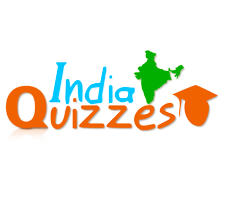Question: Chola rulers were followers of-
1. Vaishnavism
2. Shaivism
3. Shaktism
4. Jainism
Answer: 2
Question: When did Albaruni, a scholar of Central Asia visited India?
1. Mahmud Ghaznavi
2. Mohammed Ghori
3. Qutub-ud-din Aibak
4. Iltutmism
Answer: 1
Question: Which one for following Mauryan rulers was Jaina?
1. Kunal
2. Samprati
3. Dasharatha
4. Jalauk
Answer: 2
Question: Which one is related with Mahatma Buddha?
1. Malla
2. Deva
3. Shakya
4. Koliya
Answer: 3
Question: The second capital of Gupta ruler Chandragupta II was –
1. Ujjain
2. Malwa
3. Saurashtra
4. Mehrauli
Answer: 1
Question: Agam Siddhant is religious literature of –
1. Buddhism
2. Jainism
3. Brahmanism
4. Veda
Answer: 2
Question: Jaunpur was established by –
1. Balban
2. Ghyasuddin Tughlaq
3. Mohammed-bin-Tughlaq
4. Firoz Shah Tughlaq
Answer: 4
Question: How many tirthas (Officials) are referred in Arthashastra?
1. 16
2. 17
3. 18
4. 19
Answer: 3
Question: Rani Jhansi Regiment is related with –
1. Azad Hind Fauj
2. Gandhi Brigade
3. Nehru Brigade
4. Azad Brigade
Answer: 1
Question: When did Akbar abolish Jaziya?
1. 1563
2. 1564
3. 1565
4. 1566
Answer: 2
Question: Who among the following was a leader of Wahabi Movement?
1. Mohammed Ali
2. Ajmal Khan
3. Syed Ahmad
4. M. A. Ansari
Answer: 3
Question: During Akbar’s reign the biggest gold coin was called –
1. Ilahi
2. Jalali
3. Dam
4. Shamsab
Answer: 1
Question: The author of Tabqat-i-Nasiri is-
1. Minhaj-us-Siraj
2. Ziyauddin Barni
3. Amir Khusro
4. Mehadi Hussain
Answer: 1
Question: Who among the following directed to through bomb on Viceroy Lord Hardinge?
1. Rashbihari Bose
2. Khudiram Bose
3. Chandrasekhar Azad
4. Ramprasad Bismil
Answer: 1
Question: Vikramshila University was established by –
1. Dharampal
2. Devapal
3. Narayananpal
4. Mahipal
Answer: 1
Question: Lumbini, the birth place of Gautam Buddha, is in
1. Bihar
2. Sikkim
3. Nepal
4. U.P.
Answer: 3
Question: The Ajanta paintings belong to the
1. Harappan period
2. Mauryan period
3. Buddhist period
4. Gupta period
Answer: 4
Question: ‘Jatakas’ are the sacred books of the
1. Vaishnavas
2. Jains
3. Buddhists
4. Shaivas
Answer: 3
Question: The Dandi March was undertaken by Gandhiji to
1. Start Satyagraha
2. Break the Salt Law
3. Press the demand for Poorna Swaraj
4. None of these
Answer: 2
Question: Mahatma Gandhi launched the Satyagraha Movement in 1919
1. As a protest against the atrocities committed at Jallianwala Bagh
2. As a protest against the Rowlatt
3. Both of the above
4. None of the above
Answer: 3
Question: During the Indian freedom movement, the first great experiment in Satyagraha came in 1917 in
1. Bardoli
2. Sabarmati
3. Ahmedabad
4. Champaran
Answer: 4
Question: The Secretary of State for India during the British rule was
1. An official who worked as the Secretary to the Viceroy of India
2. A Secretary level official appointed in each Presidency of India
3. A British minister given full control over the Government of India
4. A senior officer appointed by the Viceroy to look into the internal administration in India
Answer: 3
Question: What for the Morley-Minto Reforms of 1909 are known?
1. Separate Electorates
2. Provincial Dyarchy
3. Provincial Autonomy
4. Federalism
Answer: 1
Question: Who presided over the first session of the Indian National Congress?
1. A.O. Hume
2. W.C. Bannerjee
3. Badruddin Tyabji
4. Surendranath Bannerjee
Answer: 2
Question: Who was the Congress President during 1940-46?
1. Jawaharlal Nehru
2. Sardar Vallabhbhai Patel
3. Maulana Azad
4. Rajendra Prasad
Answer: 3
Question: Tricolour was adopted as the National Flag in the
1. Lahore Congress
2. Belgaum Congress
3. Allahabad Congress
4. Haripura Congress
Answer: 1
Question: Who was the first propounder of the doctrine of Passive Resistance?
1. B.G Tilak
2. Aurobindo Ghosh
3. Lajpat Rai
4. G.K. Gokhale
Answer: 4
Question: When was the Dandi March undertaken?
1. 31st December, 1929
2. 12th March, 1930
3. 5th April 1930
4. 5th May, 1930
Answer: 2
Question: Who among the following wrote the poem ,i>Subh-e Azadi?
1. Muhammad Iqbal
2. Sahir Ludhiyanvi
3. Faiz Ahmed Faiz
4. Maulana Abul Kalam Azad
Answer: 3

Select Page


